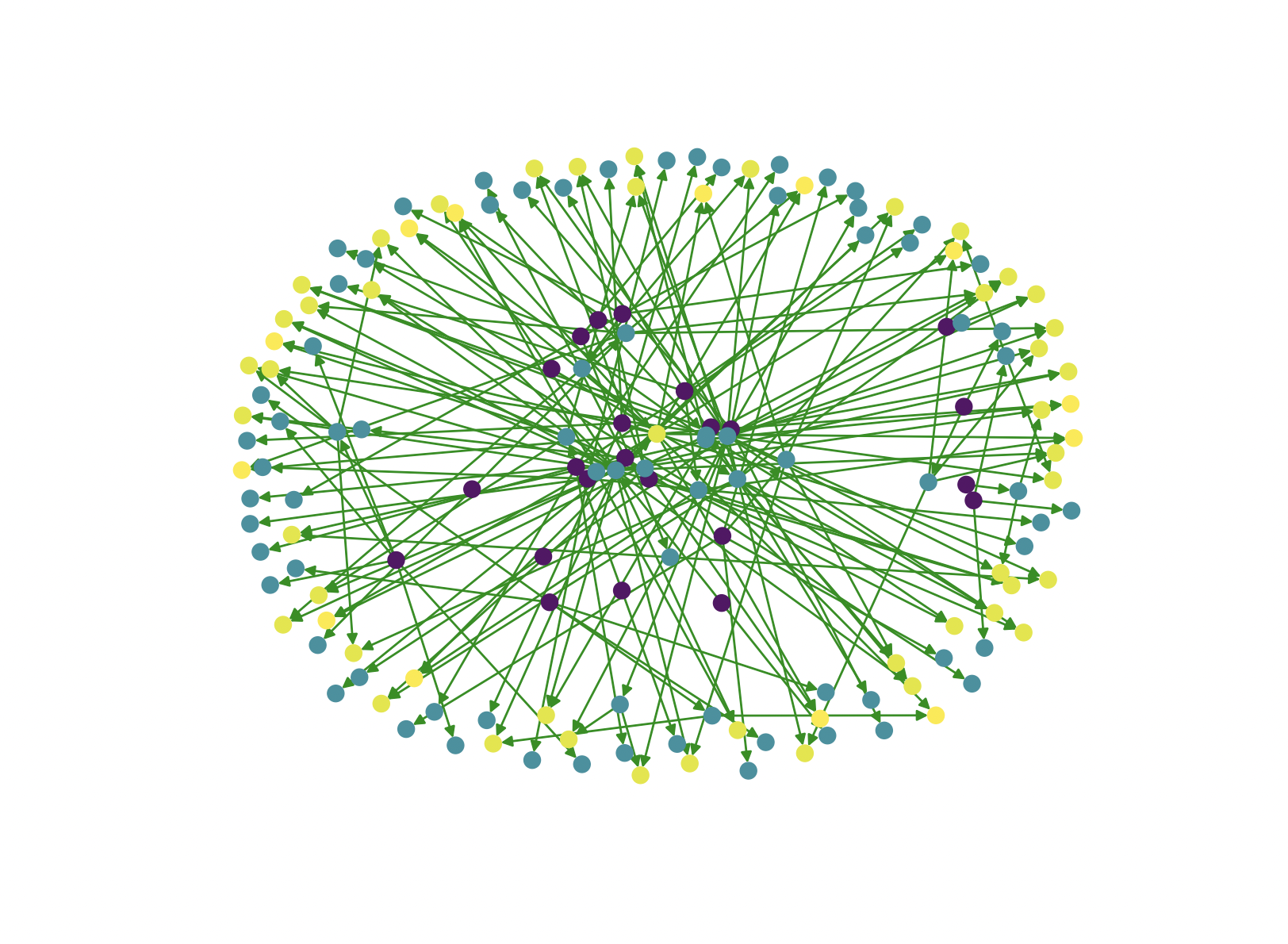Katz centrality
Katz centrality is a measure of centrality that doesn’t consider only the shortest path. It considers the total number of walks in a graph. A walk in a graph is a sequence of edges which joins a sequence of nodes. (e.g 1→2→3→4→2→1→3). Katz centrality computes the relative influence of a node within a graph by measuring the number of the immediate neighbors and all other nodes in the graph.
Usage in NetworkX
katz_centrality(G, alpha=0.1, beta=1.0, max_iter=1000, tol=1e-06, nstart=None, normalized=True, weight=None)[source]
Not fast enough? Find 100x faster algorithms here.
Example
First save locally graph.gexf to run the below example.
- Python code
- Output
import networkx as nx
import matplotlib.pyplot as plt
G = nx.read_gexf("graph.gexf")
centrality = nx.katz_centrality(G)
colors = list(centrality.values())
nx.draw_networkx(
G,
nx.spring_layout(G),
node_size=50,
node_color=colors,
edge_color="g",
with_labels=False,
)
plt.axis("off")
plt.show()

Where to next?
There are many graph algorithms libraries out there, with their own implementations of Katz centrality algorithm. NetworkX's algorithms are written in Python, and there are many other libraries that offer faster C++ implementations, such as MAGE, a graph algorithms library developed by Memgraph team.